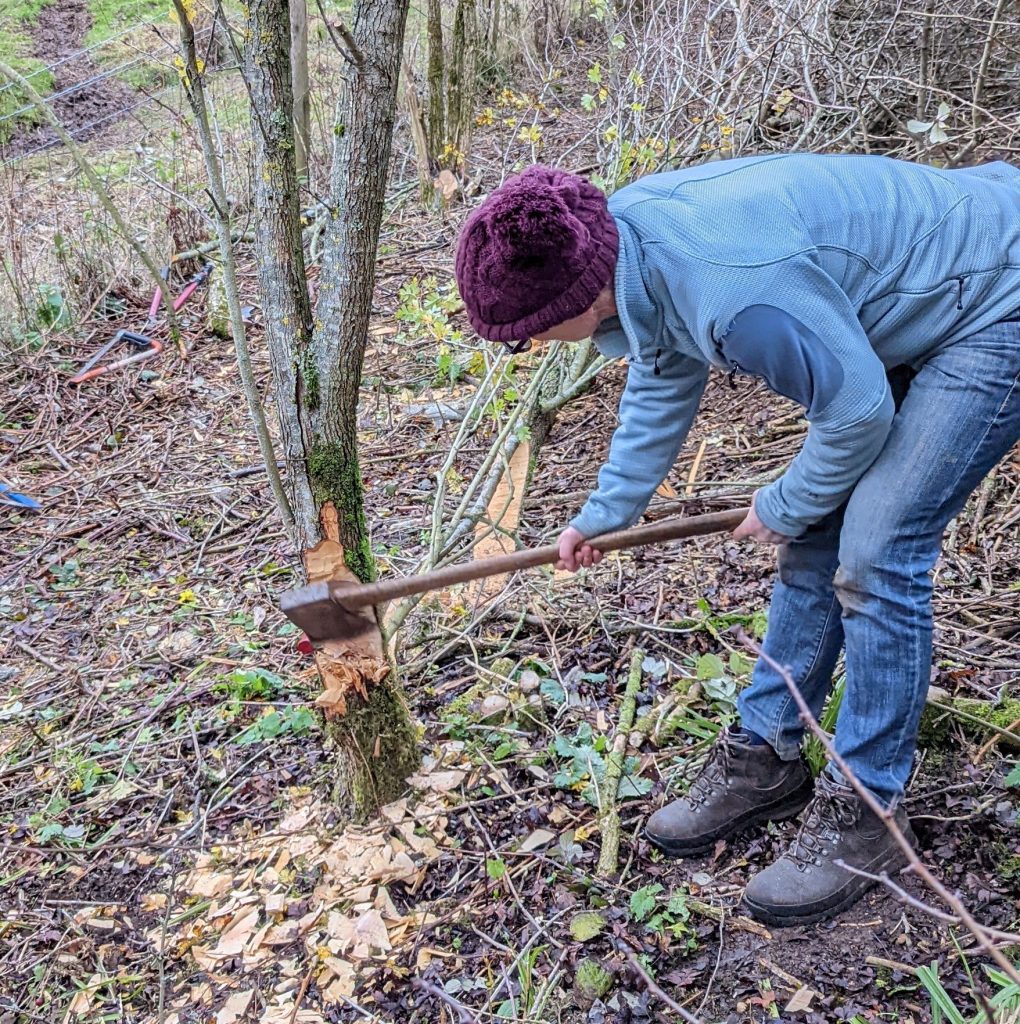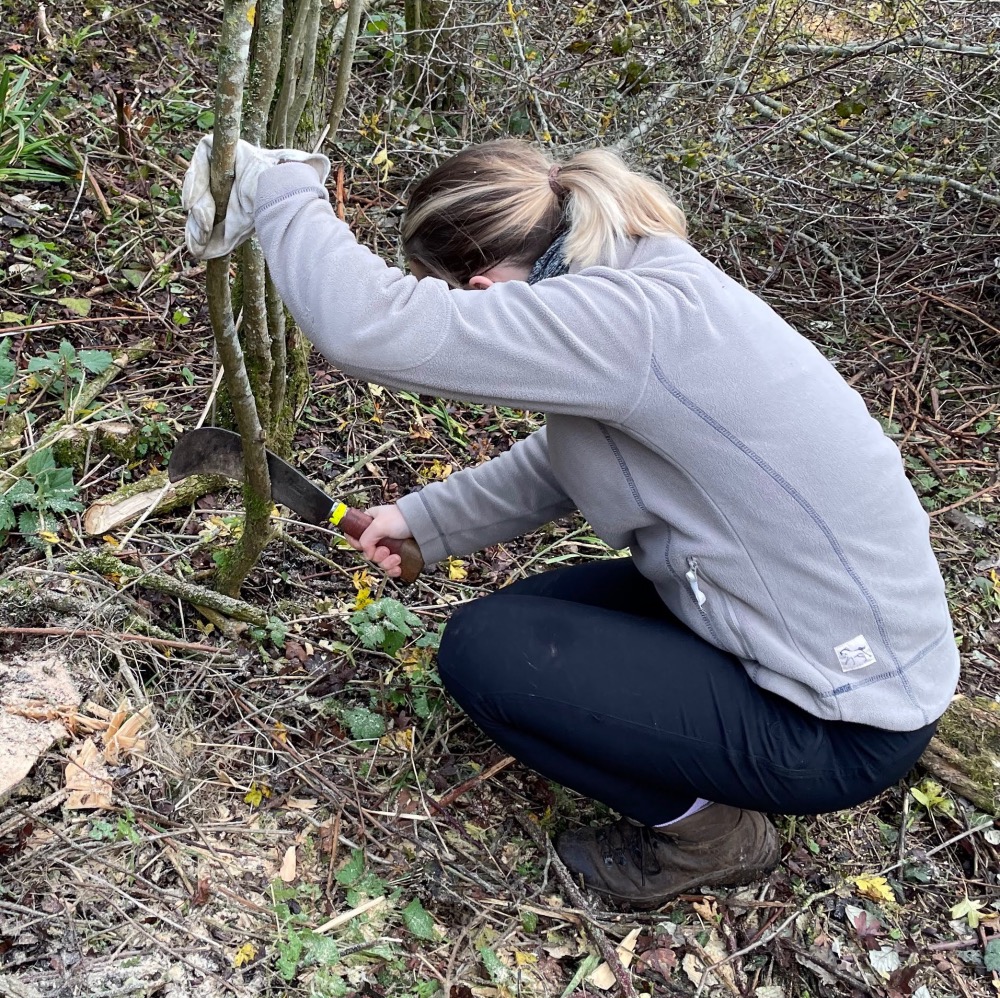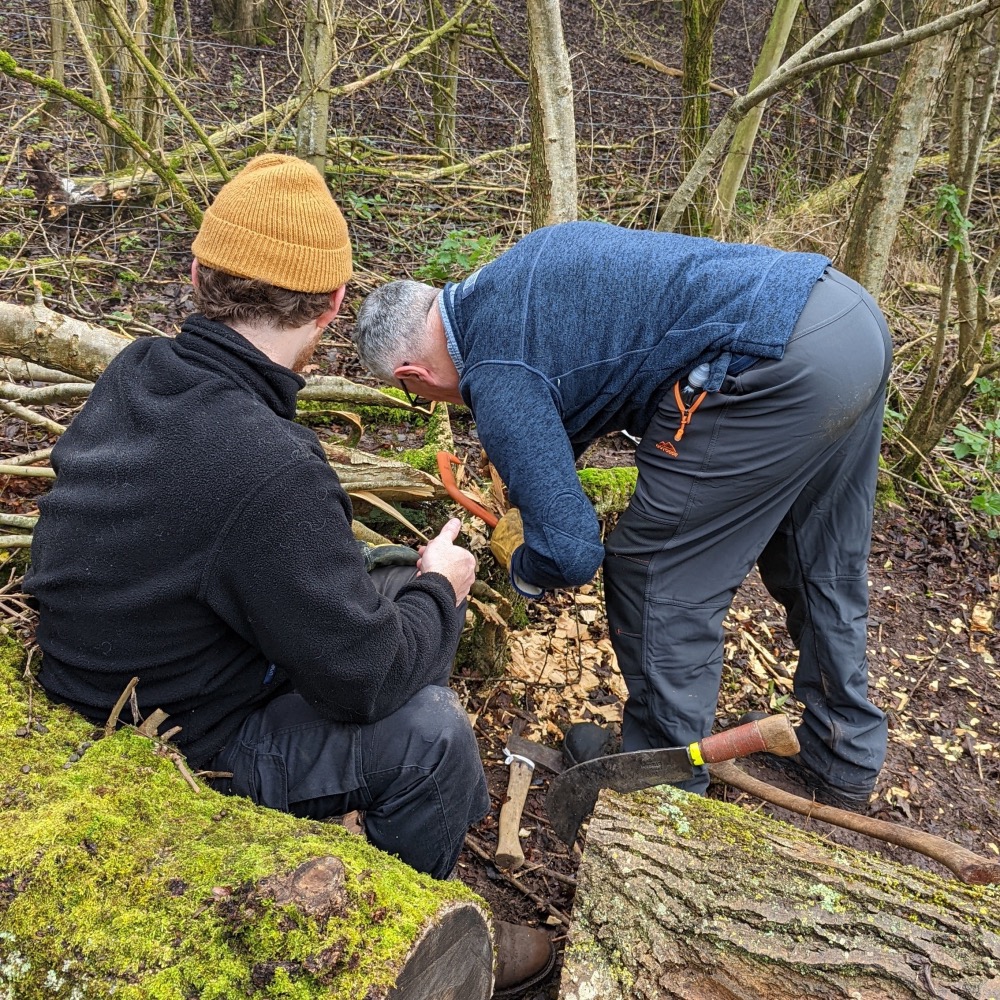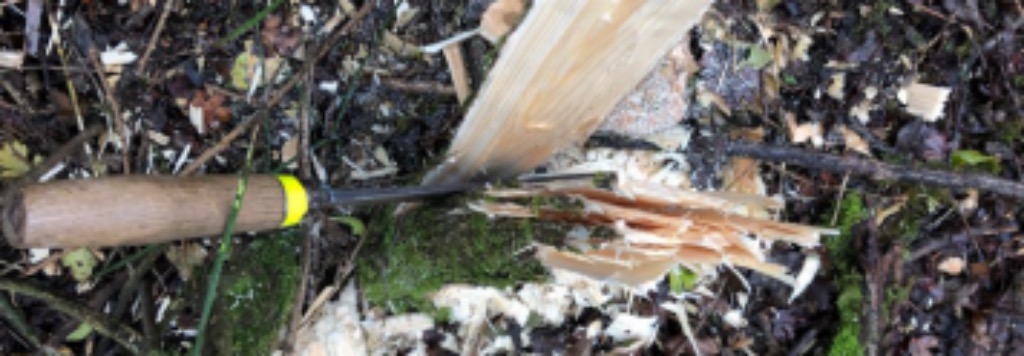This December I was lucky enough be one of 16 volunteers who spent a day with Chris and Tina from the Rural Skills Hub learning the centuries old craft of hedge laying. More information about which hedges we are laying in Stoke Park, and why, can be found on our Activities page.
Chris and Tina are both very skilled and knowledgeable, and brought patience, humour and encouragement to the day.
We were first given a rundown of the overall procedure, and introduced to the tools. The billhook is the main tool but we also used axes of various sizes, bow saws, and loppers. Those with the appropriate qualifications and safety equipment did help out with chainsaws but we tried to do it by hand as much as possible.



It was a cold and foggy day and I’d worn 5 layers thinking I was going to be cold. I soon discarded half of those layers. It was satisfying work and great fun but I have to admit it was knackering. My arms hurt for days.
The general idea is to cut part-way through the trunks of small trees, leaving a small amount intact, and then lie the trees down to form the base of the hedge.
This sounds simple but there is a lot of skill involved in it. Firstly there’s the skill with the tools. I’d never used a billhook before, and to say I’m a “novice” with a bow saw would be generous.
You need to choose the correct trees, and lay them in the correct order. Sap flows upward so the hedge is laid uphill, and you need to make sure you’re cutting into the tree at the right point to allow the sap to continue to flow.
Most trees are intertwined together at the top so you have to work out how to disentangle them from each other to lay them down in order. It’s like a 3D puzzle.
You need to cut just far enough through the trunk, and at the appropriate angle to ensure the hedge is laid in the correct direction.
You need to make sure that you cut the trunk in such a way that the tree bends rather than breaks when you lie it down. This is where the billhook comes into its own. As the trunk gets to the right thickness you wedge the billhook into the cut and use it to split the trunk along the grain. We were told to listen for the sound – “Splitting is good; snapping is bad.”

There is a particular feeling you get when you’ve been valiantly chopping through a solid tree trunk for ages, and you finally get the correct thickness to lie it down, only to hear a crack as the tree is bent over …
By the end of the first day we had a pretty respectable section of hedge laid. There was a second day of training and now things are looking pretty good, if I do say so myself.
There are more than 6km of hedges in Stoke Park so they will keep us busy for a while!
Special thanks go to Toby, who kept an eye on the hot drinks for us.
If you’d like to help with the hedges, or any of the other work we do at Stoke Park, please sign up to volunteer.